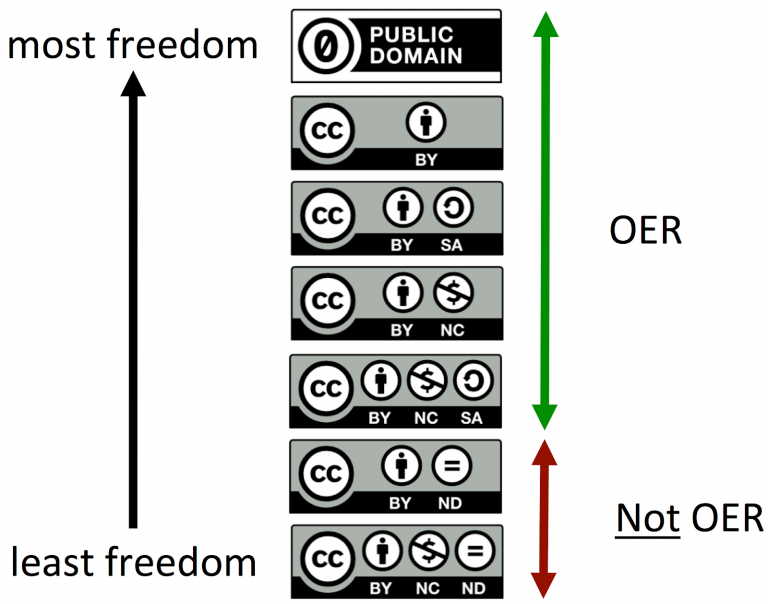"Open educational resources (OER) are freely accessible, openly licensed documents and media that are useful for teaching, learning, and assessing as well as for research purposes." (Wikipedia).
In order for a resource to be considered open, permissions must allow you to do all of the following (often called the 5 Rs):
The most common way for permissions to be stated is using a Creative Commons license. If you are not familiar with Creative Commons licenses, please take a few minutes to learn more about them.

(Image by Cable Green.)
Simply having a Creative Commons license does not make something a fully open resource. ND stands for No Derivatives, meaning the work cannot be modified or remixed. Since the option to revise or remix is a key aspect of an open resource, sources with an ND restriction are not fully open. You are still free to use the work as-is if that works for you and your course!
You may find the following guide useful in understand what you can and can't do with a work based on the license it carries. (Click on the image to access the full document.)
Though the Consortium Library's online resources are typically not OER, UAA and APU students can access them for free. If your goal is to ensure your students access to materials and you can't find what you need in an open format, you may wish to link to a resource available through the library.
Would you like help searching for library materials that fulfill your need? Ask a Librarian.
Found what you need but need some assistance linking it correctly in your course? View the guide on Incorporating Library Content in Courseware & Websites.
This work by D'Arcy Hutchings is licensed under a Creative Commons Attribution 4.0 International License.
You may reproduce, reuse, or remix any part of it for noncommercial purposes as long as credit is included. We encourage you to license your derivative works under Creative Commons as well to encourage sharing and reuse of educational materials. Note that linked content is covered by its own licenses.
Some content borrowed from Taking OER Mainstream, a presentation by Cable Green, licensed under CC-BY 4.0.